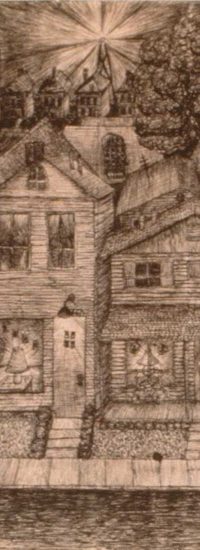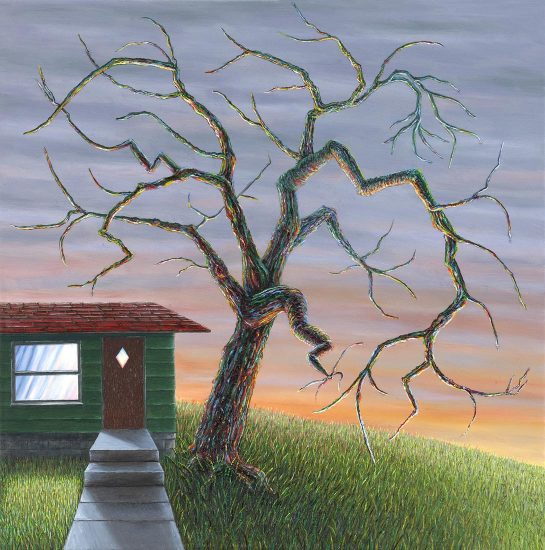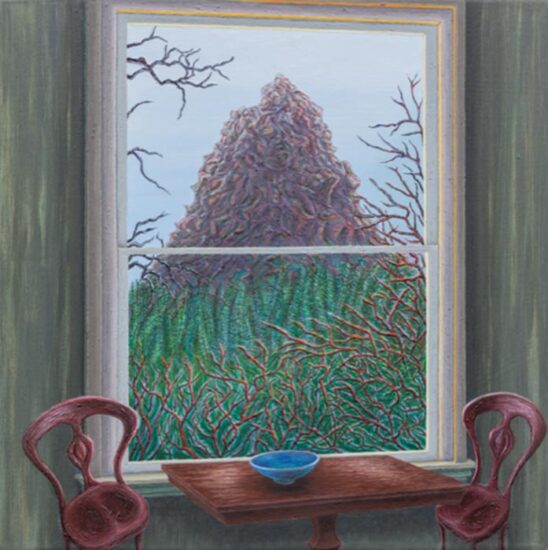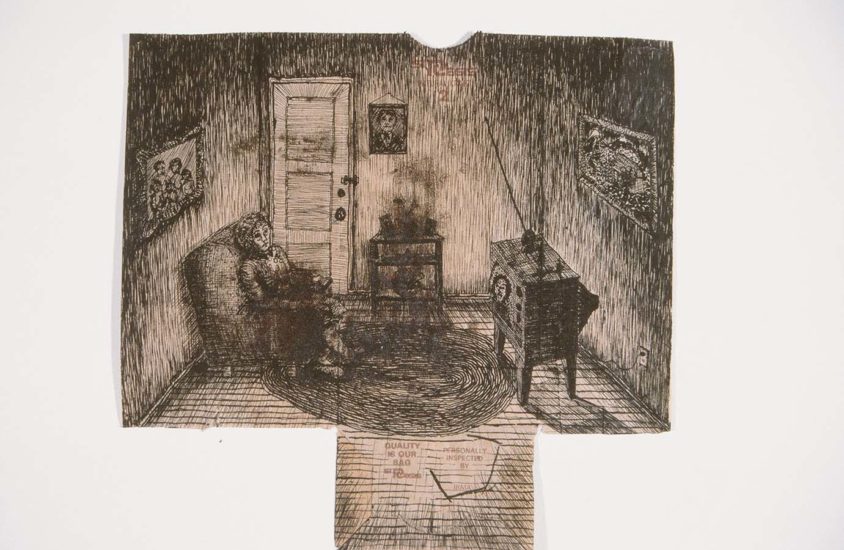Artist Statement
Straightforward Pictures
The West is my home. Prior roots take me back to northern midwestern lakes, verdant woods, and farming. As a transplant, I’ve come to relate to this new rural culture, thanks to a family cabin. In keeping with local tradition cowboy boots have found their way to the bottom of my feet. Slowly becoming a Westerner has made me appreciate how a cultural identity actually seeds and grows. I compose pictures that seek a sense of place, even belonging.
In looking at my work, notice classic themes: Four Seasons, Night and Day, Home, Trees and Grass. Timelessness. Technically, I travel a route through the influence of art history: Regionalism, Post-Impressionism, and Folk Art. Conceptually, I wrestle with a preoccupation over the increasing polarization between local and global.
Our cultural thrust has urged momentum toward a global worldview. Has this perspective overshadowed the intimacy of our nearby communities? Longing for home and all the familiarity it implies is natural for human beings.
In spending time with people in rural areas I’m curious to learn their perspectives and observations. I wonder what I’ve missed by living a life cluttered with so many non-essentials and non-stop busyness.
As an artist, I set out to pare images down to their essence. Then I paint from an internal world, pointing to “something else” in contemplative pursuit of a vein of truth.
In the Four Seasons series, the “Spring” painting captures the glance of a toddler catching her parent’s watchful eye. “Lonesome Tree” rings as ingenuous as a country western ballad. An ink drawing, “Tree,” floats over a patchwork arrangement of envelope liners, “Cradleboard,” transports a sleeping child swaddled in his mother’s papoose. A nineteenth century family is seemingly misplaced in a foreign land in a collage called “Missionaries.” Other works on paper borrow design elements from Christmas cards. A painting called “Farm” is intensely wrought as if each furrow has been planted by hand.
I believe memory and history unearth ideas that point quietly to deeper parts of an observers own essence. Looking at silent paintings, we can hear whatever we allow ourselves. Hope is that viewers will rediscover a lost thought, maybe a forgotten memory, or even a glimpse of the invisible.
I am breaking in these western boots, searching out the wonders of the rodeo.
~Wendy Widell Wolff
Review

Wendy Widell Wolff: The Poetic Resonance of the Quotidian
“The aim of art is to represent not the outward appearance of things, but their inward significance.” ~Aristotle
At first glance, Wendy Wolff’s paintings may seem to represent simply the outward appearance of landscape elements: trees, hills, rivers, and the human homes that surround them. But Wolff’s careful compositional arrangements do much more. They convey resonant moods: longing, loss, the evocative charm of lost rural existence, the anxiety of fenced containment, or the threat of environmental devastation. Wolff’s moody paintings can describe nostalgia or distress. Or they can create a surreal fantasy: a world of red trees, purple skies, or strangely textured ground that slides down the canvas as if tumbling into oblivion.
Seen in photographic reproduction, Wolff’s works may seem to be flat and precisely representational. But when Wolff’s works are seen in person, the tightly woven marks of the pointed brushstrokes and the variegated texture built by numerous layers of paint create thick impasto relief. Her elegant surfaces reject the flat, smooth nature of most two-dimensional art. Instead, Wolff builds her images with carefully controlled layers of brilliantly colored paint, so that the viscous substance of the pigment is transformed into building blocks for sculpted surfaces.
Even closer viewing reveals that Wolff does not create her images out of single colors. Instead, what may appear to be a purple tree is constructed of tiny, tight brush strokes of red and blue. Like Pointillist master Georges Seurat, Wolff knows that from even a slight distance, the human eye will blend the disparate colors into a singular tone. Such active looking engages the viewer in the physicality of the artwork in ways that simple, flat colors do not.
Wolff creates images that initially seem to reproduce the outward appearance of simple objects from our everyday existence. But in fact, her houses and trees and hills and rivers are sheer poetry. Her rich surfaces and sophisticated use of color transport viewers to surreal worlds of wonder and delight. Drawing on memory and imagination, Wendy Widell Wolff allows us to see houses and trees and hills as multivalent objects with profound inward significance.
Betty Ann Brown, Art Historian, Critic and Curator
October 2015


